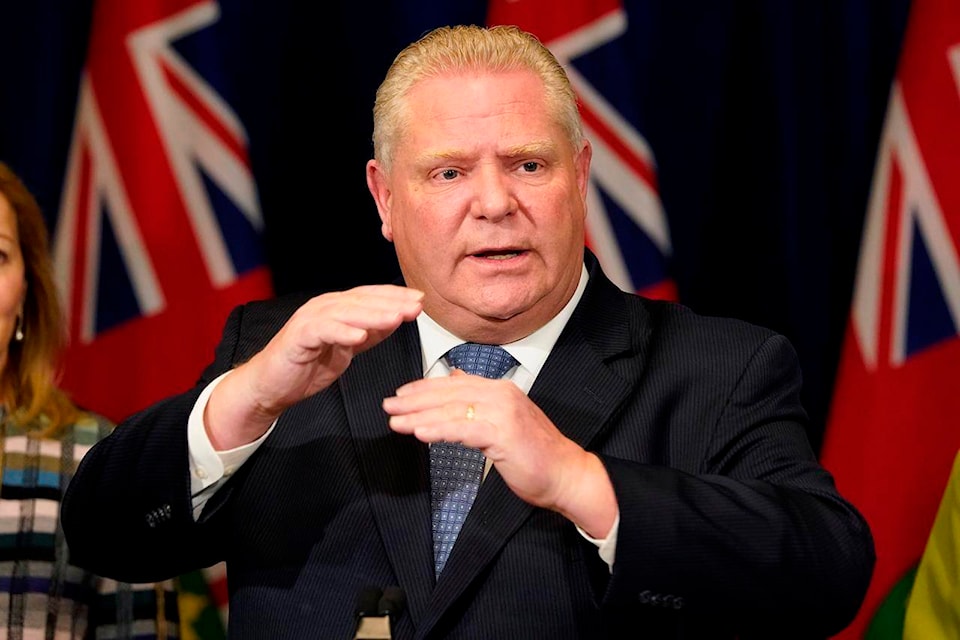Ontario Premier Doug Ford declared a state of emergency Tuesday in response to the COVID-19 pandemic, ordering the closure of bars, restaurants, theatres, libraries and banning public events with over 50 people.
“We’re facing an unprecedented time in our history,” Ford said. “This was a decision that was not made lightly. COVID-19 constitutes a danger of major proportions.”
The declaration’s intent is to slow the spread of the novel coronavirus and avoid overwhelming the health-care system, Ford said.
Effective immediately, the province ordered the closure of all facilities providing indoor recreation programs, all public libraries, all private schools, all licensed childcare centres, all theatres, cinemas and concert venues, and all bars and restaurants except to provide takeout food and delivery.
Ontario previously ordered all public schools closed for two weeks following March break.
The emergency order also bans public events of over 50 people, including parades, events and services within places of worship. It is in place until March 31.
Shopping malls are not included, but Ontario’s chief medical officer of health said he is monitoring that situation.
Essential services such as grocery stores, pharmacies, convenience stores, public transit, manufacturing facilities, construction sites and office buildings will continue to operate, Ford said.
“I want to be very clear about what this means and what this doesn’t mean: This is not a provincial shutdown,” Ford said. “The vast majority of businesses, including those most vital to day-to-day life will not be affected by this order.”
Ontario has set aside a $100-million contingency fund, and is receiving $200 million from the federal government. That money is all being directed to health-care resources, Ford said, and a provincial support package for businesses is in the works.
The money will be used to open 75 more critical care beds in hospitals, as well as 500 post-acute care beds and to help hospitals set up 25 more COVID-19 assessment centres.
Ontario is also purchasing more personal protective equipment like masks, gloves and surgical gowns for front-line health workers, as well as more ventilators.
There will also be more money for long-term care homes for additional staffing and infection control measures, and a fund is being set up to provide respite care and child-care services for front-line workers in COVID-19 assessment centres.
Scrapping time-of-use electricity pricing is being looked at, Ford said, as people are now largely at home during the hours with peak rates.
Ontario has reported a total of 177 cases of COVID-19, though that number is set to be updated later Tuesday morning.
Borders, cases, bans: What you need to know about Canada and B.C.’s COVID-19 response
Allison Jones, The Canadian Press
Like us on Facebook and follow us on Twitter.
